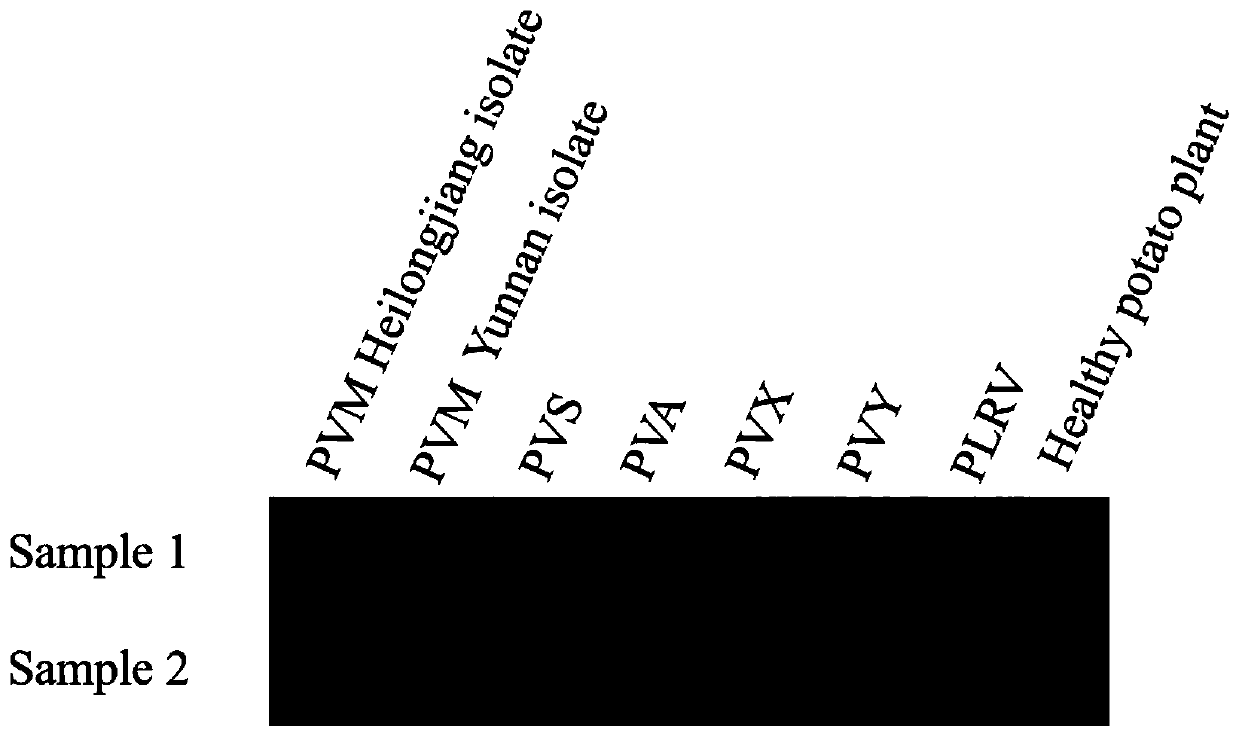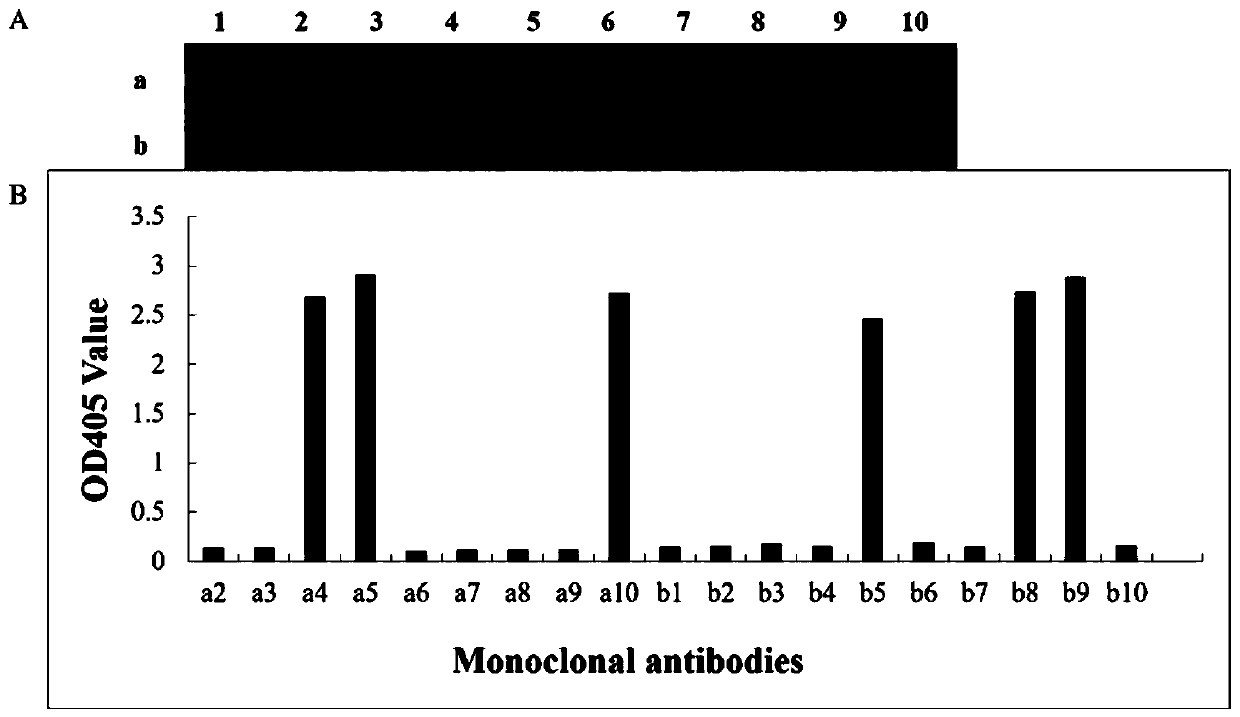Hybridoma cell line secreting anti-potato virus M monoclonal antibody and application of monoclonal antibody
A hybridoma cell line, potato technology, applied in antiviral immunoglobulin, analytical materials, biochemical equipment and methods, etc.
- Summary
- Abstract
- Description
- Claims
- Application Information
AI Technical Summary
Problems solved by technology
Method used
Image
Examples
Embodiment Construction
[0018] The hybridoma cell line 1E1 that secretes anti-potato M virus monoclonal antibody was deposited in the General Microbiology Center of the Chinese Microbial Culture Collection Management Committee of the Institute of Microbiology, Chinese Academy of Sciences on January 25, 2019. The deposit number is CGMCC No.17284, which can secrete anti-potato M virus monoclonal antibody.
[0019] A said hybridoma cell secretes anti-potato M virus monoclonal antibody, and the anti-potato M virus monoclonal antibody ascites indirect ELISA titer reaches 10- 7 The antibody type and subclass are IgG1 and kappa light chain, which have a specific immune reaction with the 34kDa coat protein of potato M virus. Analysis using ACP-ELISA and dot-ELISA methods found that the monoclonal antibody was used to detect the crude extract of the diseased leaf tissue of the potato infected with PVM. The sensitivity of the solution reaches 1:163840 and 1:10240 dilution (w / v, g / mL).
[0020] The anti-potato M vir...
PUM
 Login to View More
Login to View More Abstract
Description
Claims
Application Information
 Login to View More
Login to View More - R&D
- Intellectual Property
- Life Sciences
- Materials
- Tech Scout
- Unparalleled Data Quality
- Higher Quality Content
- 60% Fewer Hallucinations
Browse by: Latest US Patents, China's latest patents, Technical Efficacy Thesaurus, Application Domain, Technology Topic, Popular Technical Reports.
© 2025 PatSnap. All rights reserved.Legal|Privacy policy|Modern Slavery Act Transparency Statement|Sitemap|About US| Contact US: help@patsnap.com



